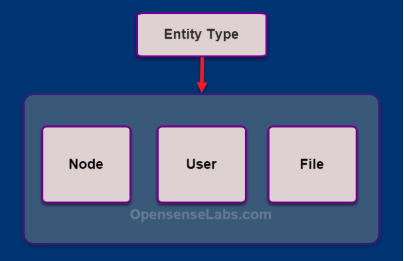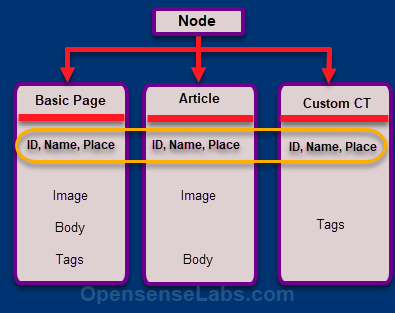In layman's term entity can be defined as “a thing with distinct and independent existence” which implies that an entity is something unique, followed by certain properties, field or aspects that makes them unique. Let's move ahead and explore what it means in Drupal.
Getting grip on Entity and Entity type isn’t easy for a novice Drupal developer. There are hour-long videos on YouTube explaining what it is. Let us cover it quickly but before that, you need to have a basic understanding of Drupal Content Types, fields to understand it better. Let’s get started.
Understanding Entities and Entity Types
In this section, we would be covering entity, entity types, and bundles. Since you already know what a Content type is let this sentence sink in “a Content type is a Bundle of Node Entity”. Sounds intimidating?
Let’s break it down if you are familiar with OOPS concept A Bundle in like an object (with fields) to a Node Entity (which you can think of as a class) if you are still confused and don’t know about OOPS concepts, let’s elaborate.
We can’t explain an Entity Type without mentioning Entity and vice versa, so, bear a little. An Entity Type is a grouping of Entities together that have something in similar, here Node, User, File are Entities having something in common like an ID.

Next term is Bundle, here we will get a clear understanding of what I implied in the introduction. A Bundle is an implementation of an Entity type to which fields can be attached. Sounds familiar…? No? Simply put, they are content types.
A Bundle is an implementation of Entity Type to which fields can be attached.
A basic page, article or a custom content type they are all a bundle of Node Entity type. A thing to remember here is that some Entity types don’t have Bundle at all, for example, files. Without Bundles you can’t attach fields, in other words, the Bundles are the one to which the field instances are attached to.

The image below shows a Node Entity type which has Bundles, Basic page, Article, and some custom content type (remember content types are Bundles) with properties marked in yellow. Properties are things that are common among Bundle and Fields can differ from Bundle to Bundle.

An Entity is a discrete piece of data of a specified Entity type with a set of common properties and some type-specific properties (if you implement bundles). Let us say we created a blog by filling out all the data like description and images we essential created an entity of some entity type.
As a final word you have to remember is that everything is an Entity in Drupal.
Subscribe
Related Blogs
Inside the Drupal AI Summit: Themes, Speaker and What To Expect

“ The web is changing fast, and AI is rewriting the rules. It writes content, builds pages, and answers questions directly,…
FOST and Drupal AI Initiative: Next Era of Responsible AI

Three years after the launch of generative AI tools marked a new age for artificial intelligence, almost 90% of survey…
Drupal AI Ecosystem Part 5: AI Content Suggestions

Drupal has steadily evolved from being just a content management system into a flexible platform that incorporates emerging…




